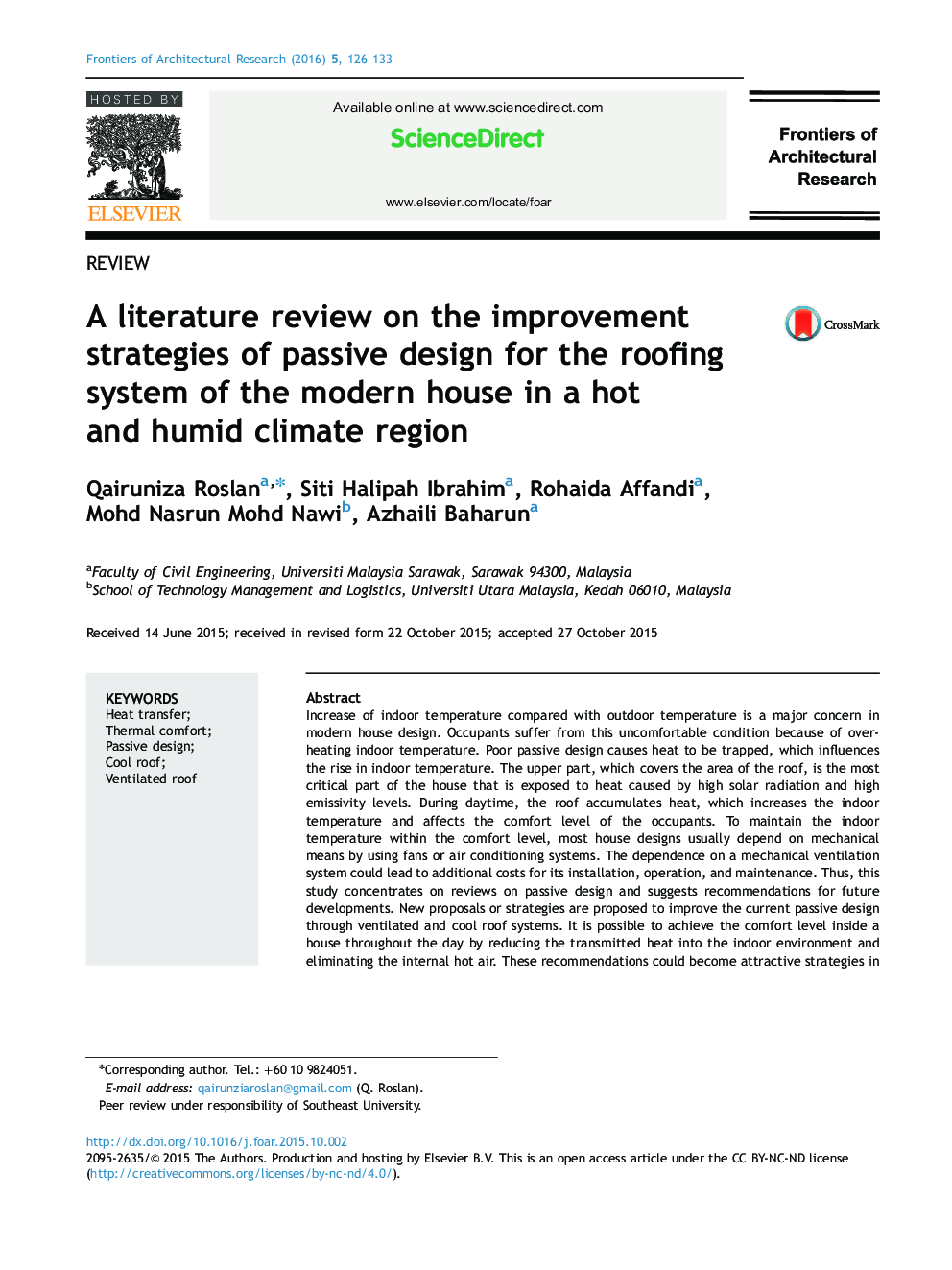| Article ID | Journal | Published Year | Pages | File Type |
|---|---|---|---|---|
| 270692 | Frontiers of Architectural Research | 2016 | 8 Pages |
Increase of indoor temperature compared with outdoor temperature is a major concern in modern house design. Occupants suffer from this uncomfortable condition because of overheating indoor temperature. Poor passive design causes heat to be trapped, which influences the rise in indoor temperature. The upper part, which covers the area of the roof, is the most critical part of the house that is exposed to heat caused by high solar radiation and high emissivity levels. During daytime, the roof accumulates heat, which increases the indoor temperature and affects the comfort level of the occupants. To maintain the indoor temperature within the comfort level, most house designs usually depend on mechanical means by using fans or air conditioning systems. The dependence on a mechanical ventilation system could lead to additional costs for its installation, operation, and maintenance. Thus, this study concentrates on reviews on passive design and suggests recommendations for future developments. New proposals or strategies are proposed to improve the current passive design through ventilated and cool roof systems. It is possible to achieve the comfort level inside a house throughout the day by reducing the transmitted heat into the indoor environment and eliminating the internal hot air. These recommendations could become attractive strategies in providing a comfortable indoor temperature to the occupants as well as in minimizing energy consumption.
